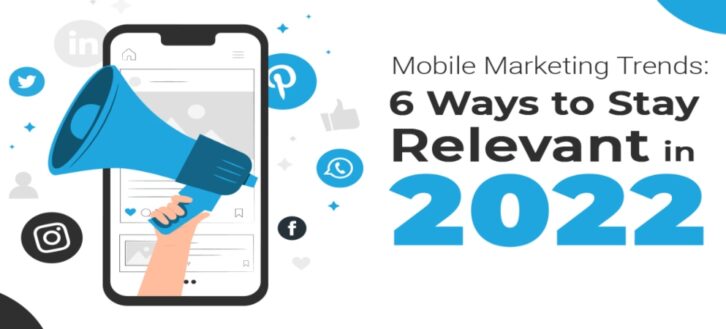Smartphones have arguably replaced dogs as man’s best friend, and it’s important for you as a marketer or businessperson to leverage that bond. Consumers are spending more time on their mobiles than ever before, using them to connect on digital media, learn, shop, and play.
But, if you think merely resizing tried and tested online marketing strategies will work, it’s time for a new perspective. Mobiles are different beasts to desktops, and your audience expects you to understand, adapt, and deliver your message accordingly.
In this article, we’ll quickly introduce mobile marketing, before letting you in on the trends to expect in the future, as well as how to get on top of them.
Read on to ensure your mobile marketing strategies remain effective, even in 2022.
What is Mobile Marketing?
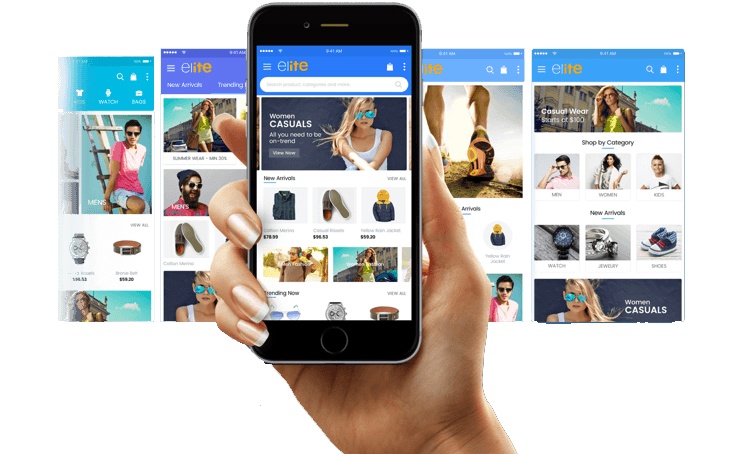
Mobile marketing can be defined as the umbrella of activities that allow you to reach, convert and sell to consumers via their mobile devices, like tabs and smartphones. It includes a separate strategy that utilizes location, personalization, and mobile content as key drivers of success.
The COVID-19 pandemic has changed people’s habits. Time spent hanging out has reduced, replaced by more hours online. Your prospects are even on the phone as they move around the house, and this behavior is set to stay.
On average, people spend 3.5 hours a day on their smartphones, with millennials doing so for a whopping 5.7 hours. That’s a lot of time lost, if you don’t have a working mobile marketing strategy in place.
Key Practices for Successful Mobile Marketing
When you market via smartphones, you need to follow three basic principles:
Personalization
Mobiles are the tech equivalent of the lady’s bag – full of things that can tell you everything about the owner. But, access is guarded. Only those trusted are let in.
Small Screen Content
While long-form content is also consumed on mobiles, shorter forms perform better. And without a doubt, visual content rules the roost.
Catching Prospects on the Move
Location-based targeting, especially when your prospects are on the move is a key advantage of mobile marketing. But, you need to ensure you’re not being intrusive.
6 Trends That Will Define Mobile Marketing in 2022 and Beyond
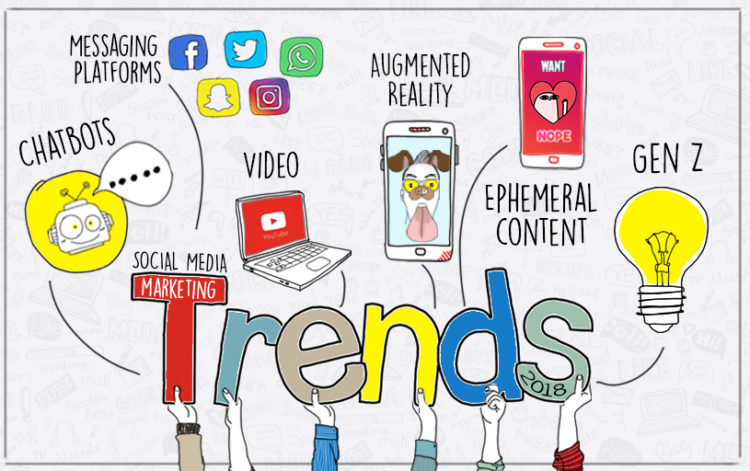
Voice Search Optimization
You’ve optimized your content for keywords. But, does that work for voice search too? Not quite. Mobile devices are perfectly tuned for spoken queries, and more consumers are catching in on this trend. In 2018, Google stated that 27% of people online used voice search. Today, you can bet that the number is much higher, and will continue to rise.
Devices with voice assistants, like Amazon Echo, Google Home, and Apple Homepod are also on the uptake. By 2024, 8.4 billion devices using voice assistants will be used worldwide.
Users are highly engaged with their voice-activated speakers. 41% feel it’s like talking to a friend, while 44% of regular users order products at least once a week.
Most voice searches are in the form of sentences, which, in search parlance, are also known as long-tail keywords. (On average, a voice search is a full word longer than one keyed in.) As you’d know, such terms usually display clear intent.
Even better, they are often queried at the end of the buyer’s journey – meaning they’re likely to be close to making a decision or a purchase – exactly when you want to be heard. Of course, a fair portion of these is because consumers speak in sentences. But, most voice searches are stacked with intent.
Therefore, it’s important to optimize content beyond SEO. Fine-tune for voice search, so that consumers hear you when looking for information, products, and services you own.

How to do It
The average voice search result contains only 29 words. Further, it is easy to grasp, usually at a 9th-grade level. Also, note that featured snippets make up 40.7% of the winning results. So, optimize your content to appear in snippets, using clear and concise conversational language.
A lot of voice searches are in the form of queries. They often begin with words like which, when, how, where, etc. So research the questions your prospects are likely to ask and answer them, preferably at the top of your pages.
Answer the Public is a good tool to find potential questions. Do remember that your answers should also cater to the consideration stage when consumers simply want information on their pain points.
Ensure that your location data is easily accessible, and Google My Business listing is updated. After all, the results of voice search queries are 3 times more likely to be based on location.
Mobile Apps & Push Notifications
Mobile apps are more than just a tool to sell. They’re the perfect way to market your brand, engage your audiences, and build a relationship with them.
Remember the analogy of the lady’s bag? An app is a perfect way to get in. But, you have to deserve the invite. 30% of consumers prefer to use a mobile site if they only plan a one-time purchase, while 50% do so because they don’t want to download the app at all.
If you can make your app enticing enough, the rewards are gold. Globally, apps are expected to earn USD 911 billion by 2023. What’s more, 50% of consumers use an app to make a purchase decision. 45% look for more information. And 29% buy.
In addition, apps can help you mine information, conduct surveys, convey birthday wishes, and more.
Then, there’s perhaps the biggest benefit of apps – push notifications. When done right, consumers love them. The chances of smartphone users buying from you increase to 63% when you give them recommendations on products they already have an interest in.
By studying an app user’s browsing history, you’ll have that information on a platter. Besides, people are generally more amenable to notifications from apps, with an average opt-in rate of 67.5%. Much higher than browsers, which max out at 10.5%.
How to do It
Rewards and points entice 51% of smartphone users to browse or shop on your app. So make it beneficial for users to download and install it.
When you build your app, ensure that the language and design reflect your audience’s. That way, they’ll connect with your messaging better.
58% of smartphone users tend to favor brands that remember them and their habits. So, ensure your communication is personalized.
Constantly engage with your audience. 25% of apps are never used, and 38% uninstall an app after they’re done with a purchase. Always keep providing useful information and deals, without being overly sales-y.
Location-based Advertising
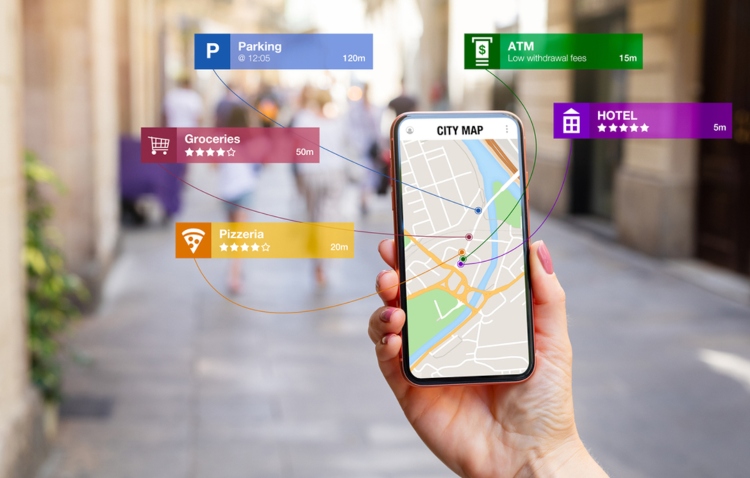
As your prospects search when on the move, their queries are loaded with intent. They’re likely to be facing a problem, and looking for quick solutions. Queries like ‘near me’ are increasingly combined with words like ‘can I buy’ and ‘to buy’.
Ads today allow you to target audiences based on their demographics, which include their general location. Your ads can be viewed by people in a country, region, or city. Better yet, you can even target a radius around a precise location.
That’s perfect when potential customers are near your store, looking for something you have. But, remember, too small a radius means your ads will rarely appear.
Another means of targeting nearby smartphones is through Bluetooth. Beacon technology lets you connect with users via low energy Bluetooth, sending messages to consumers around. It can even be used in conjunction with Google ads. Encouragingly, this technology is expected to cross $25 billion by 2025 across the world.
How to do It
When targeting users based on where they are, mention the location in your ad, preferably in the headline. You can even use a map as part of the ad.
Be creative in your strategy. How about targeting customers when they’re in or around a rival’s store?
Ensure your location data is easily accessible, and Google My Business listings are updated regularly.
Leverage data. You can send your message to people who often come near your store, even when they’re somewhere else. Personalized campaigns based on past behavior is a good idea too.
Remember, to strategize differently for impulse purchases, as opposed to big-ticket buys. The former will likely perform well with an offer, while prospects for the latter might prefer a quick demo.
Video Content

Video content tops the charts on smartphones. By 2025, 76% of your audience’s time on mobile devices is set to be spent watching videos. What’s more, mobile ad spend is set to overtake desktop next year, and the smart money will be on video marketing.
HD videos require at least 25 Mbps to stream efficiently. 85 countries today have crossed this threshold, with the UAE topping at 177 Mbps. The growing network speeds make video marketing ripe for the plucking.
Further, the advent of 5G will only enhance this trend.
There’re more reasons to create and market videos with gusto. Ad recall is 22% higher on mobile videos. 86% want brands to produce more videos. And 75% of Instagram users take action after viewing video ads.
Always remember that quality and engagement matter massively on mobiles. 84% of mobile users skip mobile ads, as compared to the 66% who skip online ads overall.
How to do It
On average, just 5.5 seconds of a video ad is watched, before the skip button is pressed. So keep the messaging short, perhaps enticing viewers to a longer video.
You can choose between pre-roll, mid-roll, and post-roll ads. Messages that appear amidst a video perform significantly better, while CTAs work best at the end.
92% of videos seen on mobiles are shared. So make that easy. Besides, 80% of time spent on social media is via mobile devices.
Skew your ad budget towards video marketing on mobiles. In the US alone, such ad spending is expected to hit USD 25 billion by 2022. In addition, YouTube is the #1 medium for consumers to research and discover products, making it perhaps the best way to influence consumer behavior.
Gaming platforms and podcasts are also great places to connect. Always ensure that your ads are relevant to your audience.
Videos are not that hard to create. A good smartphone and slick editing are all it takes.
Marketing Automation & Omnichannel Consumer Experience
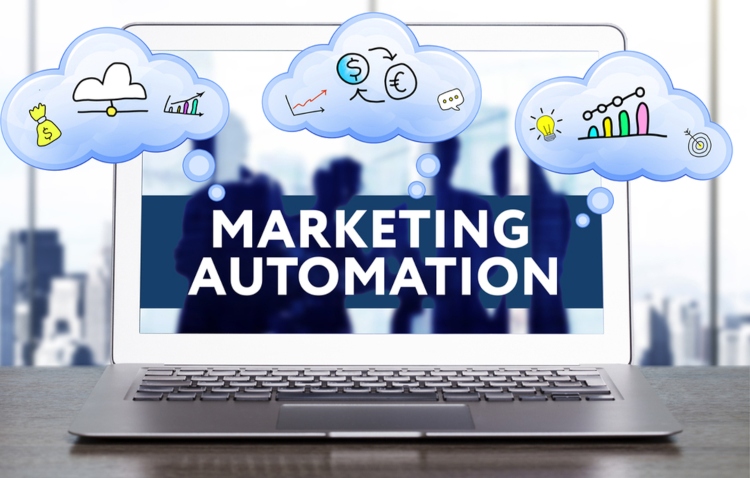
While automation is a must-have across categories, it is especially relevant to mobile marketing. With people on the move, as well as switching between apps, browsers, and devices, your reaction speed is critical.
Consumers also expect you to remember who they are, their interests, as well as their last interaction. All, in milliseconds – the time it takes for the screen to load.
Then there’s the Omnichannel experience. Your messaging needs to be consistent across platforms. You can’t say one thing and do another on different platforms.
Marketing analytics is crucial here, and the amount of data generated is mind-boggling. An incredible 2.5 quintillion bytes of data are generated every day. Irrespective of how many zeroes it includes, the gist is – you can’t get a handle on relevant data manually.
Programmatic Advertising
Marketing automation systems collect data from multiple sources. It then uses artificial intelligence and machine learning to figure out the intent and interests behind user actions. It also integrates with your CRM. Such tools ensure that your message is personalized, relevant, and timely.
With marketing automation, you can spend the bulk of your time on important things like strategizing, rather than on revising your ad placements by the minute.
When you look to the future, programmatic advertising is where it’s at. Here, the decision on whom to show your ad, on which channel or site, is taken the moment a link is clicked on. Incredibly, your message appears by the time the page loads.
When you factor in the various parameters for decision making, as well as the choice of ad to be displayed, you have the potential for perfection – or disaster. Automation is the only way to get it right.
How to do it
There are a whole bunch of tools available. Choose the right one based on your niche, or pick a combination that works.
Factors to base your decision on, are:
- Usability and learning curve
- Reporting and analytics
- Scalability
- Integrations
- Price
- Customer support
- Limitations, like the number of users, etc.
The top tools for marketing automation:
- Hubspot
- Keap/Infusionsoft
The best CRMs:
- ActiveCampaign
- Salesforce
- Freshsales
- Zoho
The leading customer database platforms:
- Tealium
- Segment
The ultimate business intelligence tools:
- Tableau
- Microsoft’s Power BI
Augmented Reality (AR) & Virtual Reality (VR)

What’s better than taking your ads to consumers? Getting them into your ads.
Consumers don’t just like AR, they demand it. 71% say they’d shop more with AR. 61% prefer retailers offering AR. And 40% would pay more if they could customize your product via AR. Last year, USD 18.8 billion was spent on AR worldwide.
It is expected to become a USD 50 billion market by 2024, and you need to be prepared to take a bite of that pie. The best-suited industries for this game-changing technology are retail, tourism, and publishing.
That said, the only thing stopping you from using AR is your imagination.
An FMCG can show how their new topping will look on a freshly baked cake. A tattoo artist can illustrate how a design will look on a prospect’s body. And a plastic surgeon can display the expected results of surgery to entice patients.
You can use VR as an enhanced form of video advertising. Instead of your audience watching your message, they can live the experience. This is perhaps the most engaging way to connect with them.
How to do It
With 40% higher conversion rates, you can use AR across the awareness, consideration, and decision stages for great results.
VR is perhaps best suited for the first 2 stages of the buyer’s journey.
KFC uses VR to take people along the journey of how a chicken ends up on aficionado’s plates.
Snapchat lets users leverage AR for cool snaps.
Ikea Place allows their audience to place any furniture in their rooms, virtually. It even allows users to upload a picture of a piece of furniture, and find a similar product.
Wendy’s Keeping Fortnite Fresh campaign entered Fortnite’s gaming world. It allowed gamers to earn coins based on playing a game attuned to the brand’s messaging.
Conclusion
You need to understand how your audience uses their mobile devices, gather data, and build your marketing strategy around it. In addition, create engaging video content, automate your processes, and reach out on the apt channel. Also do so at the right time, as well as location.
Mobile Marketing can no longer be accomplished by mere responsive design. It requires a separate strategy, content, and analytics. Irrespective of the niche you operate in, it’s imperative that you prepare for the future, today.
About the Author
Raj Gautam is an entrepreneur with multiple ventures, leveraging digital marketing to approach, engage and convert diverse audiences in Australia. One of his ventures, QL Tech, is an established digital marketing agency. It offers end-to-end digital marketing solutions, like market analysis, business strategy, web development, digital marketing, and marketing automation.
Raj loves all things sports – particularly cricket, and has a passion for travel.

